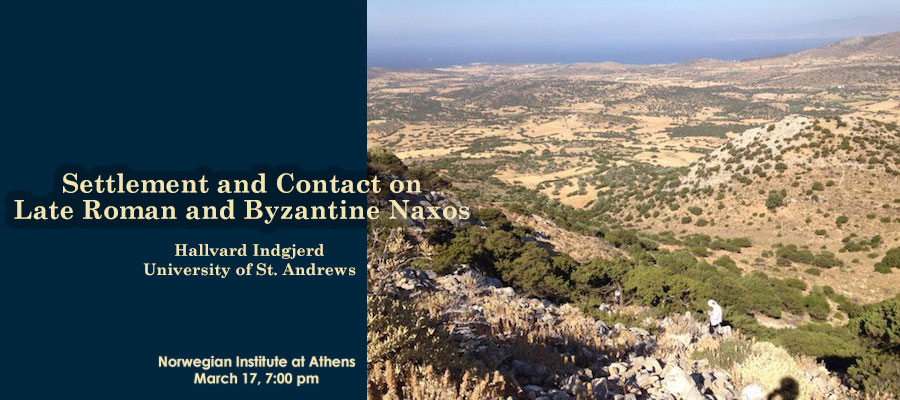Settlement and Contact on Late Roman and Byzantine Naxos, lecture by Hallvard Indgjerd (University of St. Andrews), Norwegian Institute at Athens, March 17, 2016, 7:00 pm
Archaeological work on the fortified hilltop settlement of Kastro Apalirou on Naxos started in 2010 with an architectural survey conducted by a team from the University of Oslo. Since 2015, a Greek-Norwegian-British team has been working on the site, conducting a ceramic surface survey and small-scale excavations in the frame of the Apalirou Environs Project.
While Naxos is well-known for its density of early churches, less is known of the general settlement structure and political organisation. With the ongoing work on Apalirou and other large-scale projects covering the late antique periods on Naxos and the Lesser Cyclades, however, the situation is set to change. New data will help to better the understanding of internal organisation and settlement patterns on Naxos in late antiquity, as well as provide insights into the wider contact networks within and beyond the Cyclades.
Positioned centrally in the Cyclades, the island could prove a useful case study for local, regional and inter-regional interaction among island settlements in the Late Roman to Middle Byzantine Aegean. How are daily life, economic activities and exchange networks influenced by changes in the political situation, such as the area's position on, at times, diffuse border between Byzantium and the Arab world?
This talk will present preliminary data from the fieldwork on Kastro Apalirou and aims to investigate possible solutions and spur discussion.
